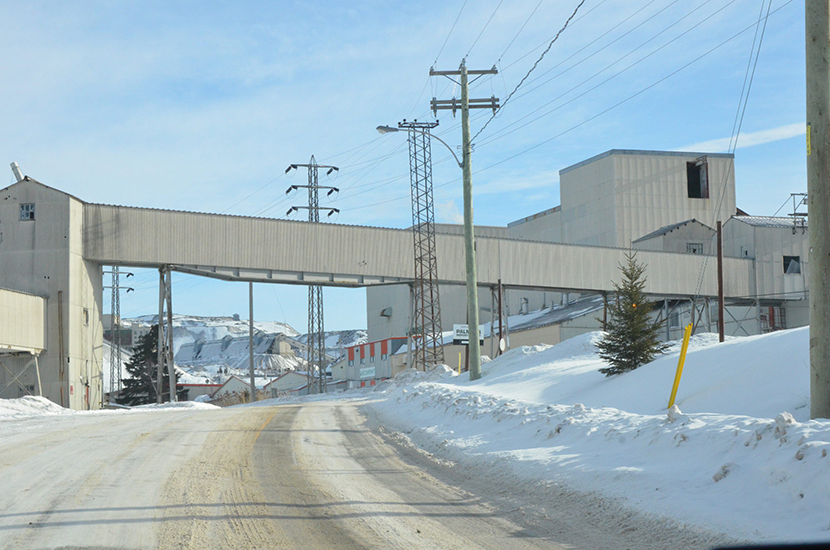
Quebec-based Dundee Sustainable Technologies is slashing leaching time and extracting more gold without using toxic cyanide in a new process geared for mining’s future.
The trademarked process, called Clevr, uses a 2% bleach solution in leaching kinetics, the chemical reaction that separates gold from ore, to release gold within a couple of hours versus 36 hours or more in traditional cyanide leaching.
“We’ve been driven in developing and now commercializing novel metallurgical processes for the mining industry and our approach has always been to improve efficiency,” Jean-Philippe Mai, president and CEO of Dundee, said by phone.
“It opens up a lot of doors when you can drop the kinetics, increase recovery and reduce the footprint.”
Dundee, based in Thetford Mines 100 km south of Quebec City, has been pushing the leading edge of environmentally friendly mineral extraction and metallurgy processes for the past decade. It’s focusing on eliminating the use of cyanide and separating arsenic while achieving improved gold recovery. It has more than 50 patents in about 15 countries.
Newmont (TSX: NGT; NYSE: NEM), the world’s largest gold miner by production, is testing Clevr at its head laboratory in Denver.
“The Clevr reagent appears to be an efficient lixiviant that could provide an alternative to cyanide,” Frank Roberto, Newmont’s Director of Processing, said by phone from the lab.
The closed-loop Clevr process allows operators to save on reagents and eliminates the need for tailings ponds which lowers cost, risk and environmental impact. Besides no cyanide, there’s no toxic liquid or gaseous effluents produced, Dundee says. Solid residues are inert, stable and non-acid generating. It all contributes to a formula for a cleaner, efficient and cost-effective alternative to cyanide.
Clevr uses sodium hypochlorite, not chlorine gas, with a catalytic amount of sodium hypobromite in acidic conditions to put the gold into solution. Contact time is short, done at ambient temperature and pressure and all chemicals are recycled within the circuit. If needed, sea water may also be used, the company says.
Gold extraction yields are routinely more than 95% while capital and operating costs are competitive with traditional processes. Costs are about C$20 per tonne of ore in a 10,000-tonne-per-day direct leach operation. It adds up to increased gold recovery in a fraction of the time.
“Our mission is not to go head-to-head with cyanide because it’s been used for more than a century and we as miners know that it works,” Mai said. “But we have a reagent that’s allowing for additional extraction at a fraction of the time, so what we’re putting forward is efficiency.”
Dundee developed the process because some of its early clients had projects that were denied the use of cyanide for environmental reasons. Just looking at the general trend of environmental regulation shows that miners should be prepared for tightening rules as time progresses. The company can develop individual solutions for each project’s circumstance, Mai said.
Dundee also offers its trademarked GlassLock process to remove and stabilize arsenic. It turns the toxic substance into glass – vitrification – by integrating it in a mixture of common reagents such as silica, recycled glass and hematite. The arsenic compounds are stable, permanent and insoluble within a glass product, providing greater stability, the company says.
Metallurgy is custom to the project so Dundee does preliminary test work and modeling using project specifics to size equipment and supply needs for each solution, whether Clevr or GlassLock, Mai said. Clevr’s shorter processing and the lack of a tailings pond and dams can have a profound impact on the mine plan, he said.
“It’s not just dollars per tonne of processing, it’s what the impact is on the overall project,” he said. “That’s the exercise we’re doing with the miners and project developers to really get a sense of what the upside is of a new process on any developing gold project.”
The preceding Joint Venture Article is PROMOTED CONTENT sponsored by Dundee Sustainable Technologies and produced in co-operation with Mining.com. Visit: www.dundeetechnologies.com for more information.
5 Comments
Bruno Bissonnette
Is it possible to visit your pilot plant close to Thetford-Mines Qc. ?
JORGE VILLASENOR
ok
John Critchley
Great to see safer alternates to the use of cyanide. Clever! And then there is the dangerous contamination of mine sites due to roasting gold bearing rock. Hopefully there will be a practical solution to collecting and locking in arsenic that is scattered around mine sites.
Martín salazar
Interesante
Wilfredo Trujillo
Siempre está latente en Perú una alternativa al uso del cianuro …este ingresa a nuestro medio volúmenes significativos de uso en minería aurífera inclusive en polimetalicos ….. unos años atrás se interesó las áreas académicas en la thiourea pero no obtuvo el apoyo económico del estado ….